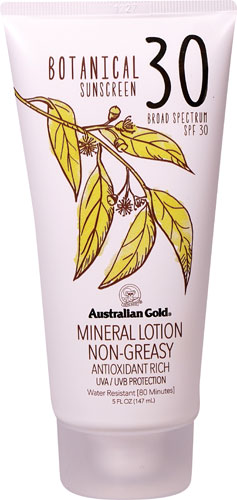Summer often evokes some of life’s greatest pleasures, from whiling away entire days on the beach to savoring heart-pumping hikes in the sun.
But with the rise in temps also arrives a heightened worry about skin protection.
As it undoubtedly should. Your skin is your body’s largest organ, and, as such, has a number of vital tasks—from shielding you from the environment and regulating your body temperature to helping you detoxify. During the summer, your skin—which may have enjoyed the protection of clothes during fall and winter—is even more susceptible to the sun’s powerful ultraviolet rays that, in excess, may lead to burns, premature aging or skin cancer. And while sunscreen ought to be used daily, year-round, it enters our consciousness with greater urgency when the mercury rises.
But sunburn—and how can it protect you? Here are 7 things to know about SPF so that you can stay safe this season—and in all those to come:
1. High SPFs aren’t necessarily better
SPF stands for Sun Protection Factor, meaning the facility of a product to shield your skin from UVB and UVA radiation. (To note, UVA rays penetrate deeper into the skin and may lead to photoaging and lower immunity, while UVB toasts the top level of your skin, leaving you with those immediate, tell-tale burns that can make putting on clothes a challenge.)
To that end, it may seem like common sense to reach for the highest level of SPF on the market. In short, don’t. The Environmental Working Group found 61 products asserting an SPF of 70 or higher. This may sound like magic—I can play in the sun all day!—but the FDA reports they don’t have enough data “demonstrating that products with SPF values higher than 50 provide additional protection.” Rather, choose a sunscreen in the 30-35 range with both UVA and UVB (aka: “broad range”) protection.
2. Sunscreen shouldn’t be your only form of protection
Most dermatologists agree that one of the best things you can do for the safety and appearance of your skin is to stay out of direct sunlight for extended periods of time and to wear sunscreen daily. In addition to that, consider clothes. As Live Science reports, clothing can decrease your risk of sunburn by 27 percent. Sunglasses are equally important, in that they can shield your eyes from UV rays. Wear a hat to protect your scalp as well, and, last but not least, schedule outings for the beginning and end of the day, when the sun is weaker.
3. Waterproof sunscreen is a myth
There’s no denying the appeal of a sunscreen product that promises to protect us while we’re out on the water, whether that’s surfing, sailing, or simply splashing in the whitewash. But don’t be misled by products claiming to be waterproof. Not only is it now against the law to call a sunscreen waterproof under new FDA regulations, but it’s also playing Russian Roulette with your skin, in that the product may be water resistant (for roughly 40-80 minutes) but not water proof. Which brings us to our next point:
4. You must reapply SPF
Even if your SPF promises all-day protection, you still need to reapply it—and frequently at that: According to the American Academy of Dermatology Association, you need to “reapply sunscreen approximately every two hours, or after swimming or sweating.” Just as important? Again: minimizing your time in the sun (and seeking shade when possible)—using sunscreens to increase your sun time inadvertently increases your exposure to other types of potentially harmful solar radiation.
5. Beware of spray sunscreens
Sure, spraying on sunscreen seems to be a win-win—especially if you have bouncy kids who are eager to return to that sandcastle—but opt instead for creams and lotions. Why? Spraying inherently leaves patches of skin without protection, particularly those easy-to-miss places. What’s more, spray sunscreens—operating from an aerosol can—contain skin-drying alcohol just when your skin needs hydration the most. (Avoiding alcohol altogether in sunscreen may be hard to find, but do ensure it isn’t one of the first ingredients.)
6. “Base tans” are a thing of the past
Two decades ago and you might have heard people saying that possessing a “base tan” was in itself a form of sun protection. Think again. Not only does a tan not safeguard you from UV radiation, but it’s also a sign that damage has already been done. On that note, follow the advice of the American Academy of Dermatology—who created a PSA encouraging women to accept and celebrate their natural skin color (and to “ban the tan”)—and embrace the skin you’re in. Future you will thank you.
7. Timing is everything
Many make the mistake of waiting to coat on sunscreen until they’re already in the sun. But, as with everything in life, timing is key. Physical sunblock—with natural ingredients such as zinc oxide and titanium oxide—start working the moment they’re applied, but chemical sunscreens need time to absorb into your skin before you hit the sand (or pool or trail or volleyball court). Similarly, the time of day, the time of year, the time of your life and how close you are to the sun all impact your susceptibility to sunburn and sun damage. Arm yourself with these tips—and be vigilant about practicing sun smarts—and you can have a splendid summer without compromising your skin health.




